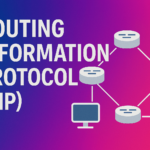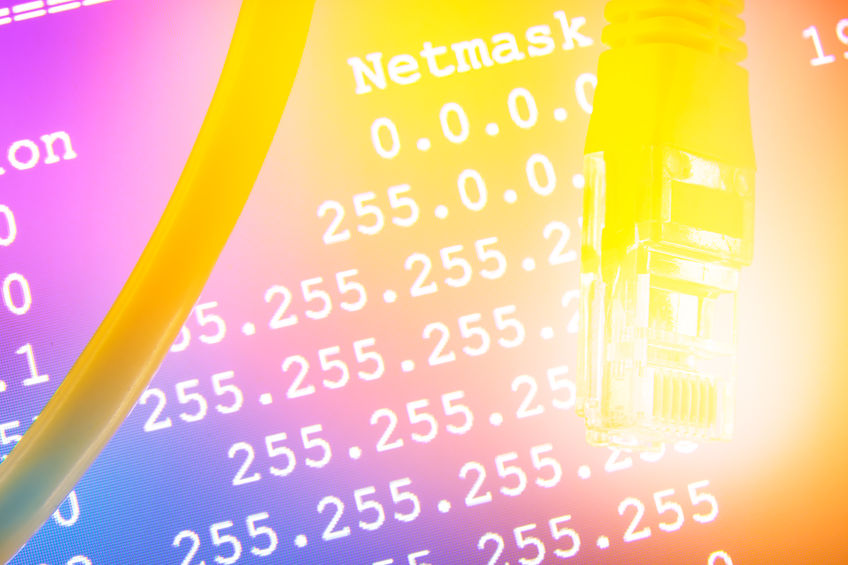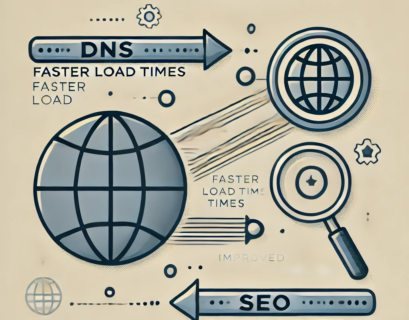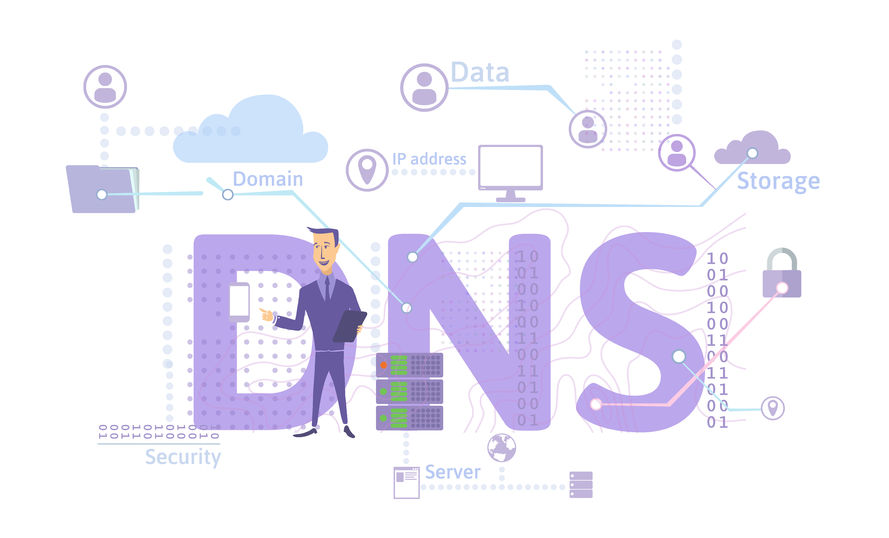If you have ever wondered why DNS primarily relies on UDP (User Datagram Protocol) instead of other transport protocols like TCP (Transmission Control Protocol), we will explain everything in detail in today’s blog post. So, without any further ado, let’s begin!
Table of Contents
Understanding DNS
The Domain Name System, or shortly DNS, is the internet’s address book, responsible for translating human-friendly domain names (like www.domain.net) into the numerical IP addresses (like 123.45.6.7) that computers use to communicate with each other. It acts as a distributed database, allowing quick and efficient DNS resolution of domain names to IP addresses (IPv4 and IPv6).
Additionally, DNS is a part of the application layer. As you probably know, all application layer protocols require the use of a transport layer protocol like UDP (User Datagram Protocol) and TCP (Transmission Control Protocol). In the case of DNS, it prefers to utilize the not-so-reliable UDP protocol in most cases. Yet, occasionally it uses the more reliable TCP protocol.
Let’s dive deep and explain more about these protocols and when and why the Domain Name System puts them in use.
DNS using UDP and TCP
Both UDP and TCP are protocols used to send packets of data over the internet. They do that on top of the IP protocol, which means that they direct the packets to IP addresses. They are treated very similar on their way from the users’ computers, through the routers and all the way to the end destination.
DNS and TCP
TCP, also known as Transmission Control Protocol, is a widely used transport layer protocol. When you make a request for a website from your browser, it will most probably use exactly TCP protocol to send the data packets to the server. For every request you send (every action you take on the web page like click, sign in, etc.) you will receive TCP packets back.
TCP is orientated to the reliability. All the data sent over TCP is tracked, and no data gets corrupted or lost on the way. The protocol numbers the packets and does error checking by pushing the receiver to confirm that it got the data.
Here are some cases in which DNS utilizes TCP (Transmission Control Protocol):
- Zone Transfer: When a DNS server needs to transfer a complete DNS zone to another server, it typically uses TCP. This ensures the reliable delivery of larger data.
- Large DNS Responses: TCP is used when DNS responses exceed the maximum size supported by UDP, which is 65,535 bytes. This can happen with DNSSEC or large resource records.
- DNS over TCP (DoT) and DNS over TLS (DoT): For enhanced security, DNS can be encrypted using TCP-based protocols like DoT and DoT, protecting against malicious attempts.
- Firewall and Network Restrictions: When firewalls or network policies block UDP, DNS queries and responses are transmitted over TCP.
Learn more about TCP (Transmission Control Protocol) !
DNS and UDP
The UDP protocol is all about speed. All those checking of the packets slow down the communication and create latency. By using UDP, the receivers don’t need to confirm the packets; the sender just continues sending without wasting extra time to receive feedback. In this communication, the receivers lose some of the packets, but it doesn’t stop the communication. This makes it perfect for live streaming or online games, even if the connection stops for a bit and the screens of the receivers freeze, in a moment they will receive the next packet, and everything will continue.
DNS primarily uses UDP (User Datagram Protocol) for most of its operations. UDP is chosen for its speed, efficiency, and suitability for small, time-sensitive DNS queries and responses. UDP is used in the following cases:
- Regular DNS queries: When you enter a web address, UDP is used to send the query from your device to a DNS server.
- DNS responses: The DNS server sends the response, including the IP address, back to your device using UDP packets.
- Caching: DNS servers often cache previously resolved queries, allowing for faster responses using UDP without querying authoritative servers again.
- Small data transfers: DNS queries and responses are typically small, fitting well within UDP’s maximum packet size of 65,535 bytes.
- Stateless communication: DNS operates on a stateless model, and UDP’s stateless nature enables the efficient processing of multiple requests together.
DNS Use UDP vs TCP: Comparison Table
While both UDP and TCP are transport layer protocols used in DNS, they serve different purposes depending on the situation. Here’s a quick comparison to show how they differ when used in the context of DNS:
| Feature | UDP (User Datagram Protocol) | TCP (Transmission Control Protocol) |
| Connection Type | Connectionless | Connection-oriented |
| Speed | Faster (no handshake) | Slower due to 3-way handshake |
| Reliability | Unreliable (no delivery confirmation) | Reliable (ensures packet delivery) |
| Packet Size Support | Up to 512 bytes (standard, unextended) | Supports larger packet sizes |
| Overhead | Low | High |
| Use Case in DNS | Regular DNS queries/responses | Zone transfers, large responses, DNSSEC |
| Security | Less secure (stateless) | More secure (stateful) |
| Failsafe | Retries with TCP if needed | Ensures full delivery with retransmission |
DNS prefers UDP for its speed and efficiency, especially for small, time-sensitive queries. TCP is only used when necessary, such as when UDP can’t handle the data or reliability is essential.
Why does DNS prefer UDP?
As you just read, the UDP is unreliable but a lot faster than TCP, but don’t panic just yet. DNS requests are very tiny, so they have no problems fitting into the UDP segments.
It doesn’t use a time-consuming three-way hand-shake procedure to start the data transfer like TCP does. The UDP just transmits the data and saves plenty of time.
UDP can support many more clients at the same time thanks to the lack of connection state. The TCP has Receive and Send buffers, Sequence and Acknowledge Number Parameters and congestion-control parameters.
Don’t think it is so dangerous using UDP, you can add extra protection on the application layer. An application can use it and it can be reliable by using timeouts and resend at the application layer.
How does Domain Name System work?
In the DNS world, we are trying to cut the resolving time as much as possible. Seconds is an eternity, we want to reduce the time to just a few milliseconds. TCP is more secure, but it just can’t keep up with the UDP, and about protection, there are extra ways of adding it. So, in the end, you get them both – speed and protection.
Ready for ultra-fast DNS service? Click to register and see the difference!Experience Industry-Leading DNS Speed with ClouDNS!
Advantages and Disadvantages of Using UDP for DNS
UDP is widely used for DNS operations. Below are some of the advantages and disadvantages of using UDP for DNS.
Advantages:
- Speed and Efficiency: UDP is faster than TCP because it is connectionless, which means it does not establish a connection before sending data. This makes DNS queries quicker and more efficient, crucial for the large volume of DNS requests.
- Lower Overhead: UDP has less overhead compared to TCP, as it does not perform error-checking and connection management. This results in faster data transmission and lower latency.
- Simplicity: UDP has a simple protocol structure that allows easier and faster processing of DNS queries and responses.
Disadvantages:
- Lack of Reliability: UDP does not guarantee the delivery of packets, which can lead to packet loss. This lack of reliability can affect the accuracy of responses.
- No Error Correction: Since UDP does not include mechanisms for error correction, any lost or corrupted packets are not retransmitted. Additional mechanisms to handle these issues may be needed.
- Security Concerns: Because it is stateless, it is more exposed to spoofing and other types of attacks, requiring additional security measures.
Despite these challenges, the efficiency of UDP makes it a preferred choice in DNS operations. Its ability to quickly resolve numerous requests with minimal overhead outweighs the potential drawbacks, making it suitable for the high demands of DNS queries.
Conclusion
In conclusion, DNS uses UDP due to its speed, efficiency, and suitability for most DNS operations. UDP allows fast DNS resolution of domain names, quick delivery of DNS queries and responses, and efficient processing of small, time-sensitive data transfers. While TCP is employed in specific cases such as zone transfers, larger responses, and encrypted communication, UDP remains the preferred choice for its lightweight nature and low resource usage. The utilization of UDP in DNS ensures the smooth functioning of the internet, connecting users to their desired websites and services with speed and efficiency.






